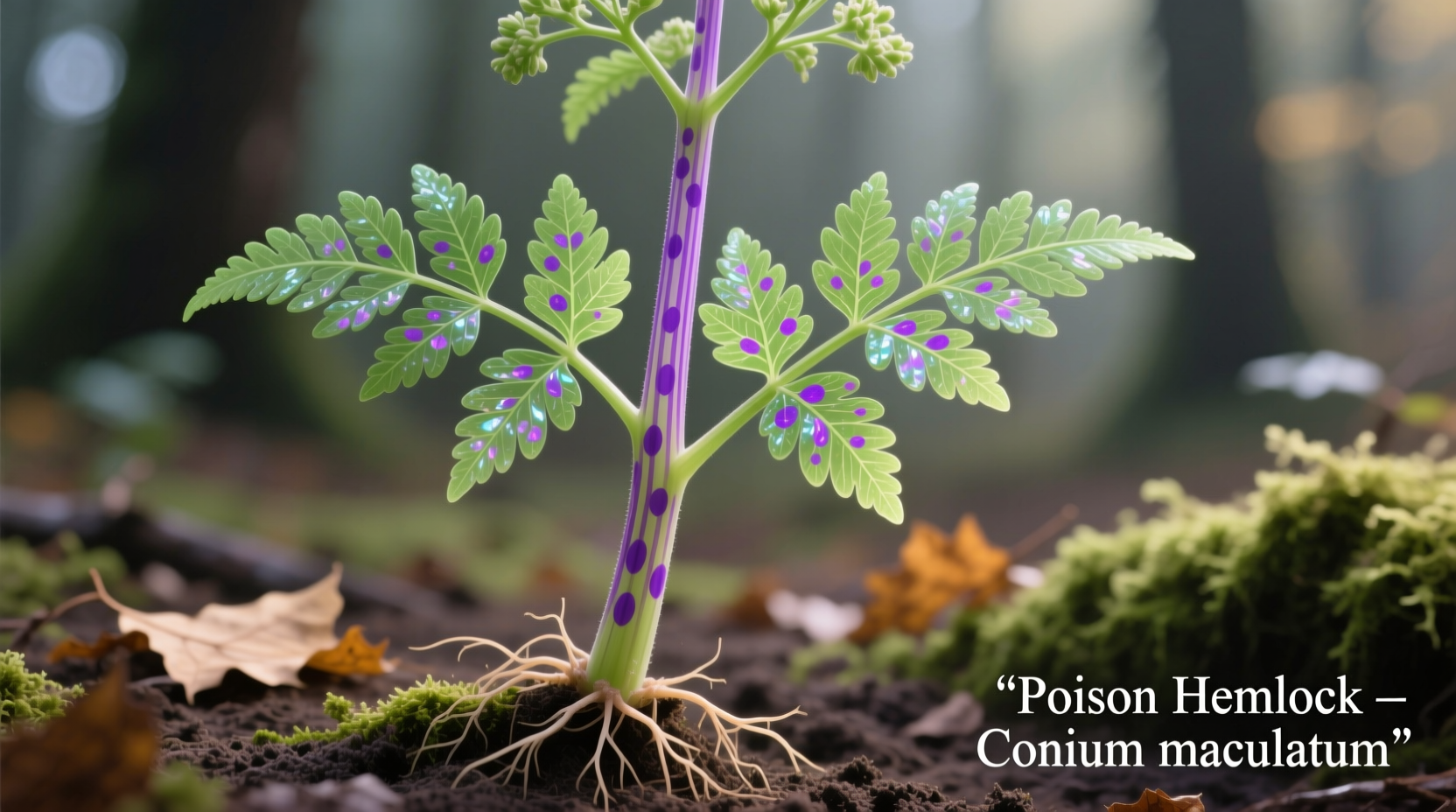If you've found a plant that looks like parsley but has smooth, purple-spotted stems and emits a musty odor when crushed, it's likely poison hemlock—a highly toxic plant that can be fatal if ingested. Immediate identification is critical as symptoms of poisoning can appear within 15-30 minutes.
Discovering a plant that resembles parsley in your garden or during foraging can create immediate safety concerns. Many gardeners and foragers face confusion between edible parsley and its dangerous look-alikes, particularly poison hemlock (Conium maculatum). This comprehensive guide provides essential identification techniques backed by botanical research to keep you safe while exploring nature's bounty.
Why Parsley Look-Alikes Pose Serious Risks
Parsley (Petroselinum crispum) belongs to the Apiaceae family, which includes both edible herbs and deadly poisonous plants. The visual similarities between these species create significant risks for inexperienced foragers. According to the Centers for Disease Control and Prevention, plant poisonings account for approximately 7% of all poisoning exposures reported to U.S. poison control centers annually.
The most dangerous confusion occurs with poison hemlock, which contains coniine—a neurotoxin that can cause respiratory failure and death. Historical records show poison hemlock was used for executions in ancient Greece, including the famous case of philosopher Socrates.
Top 3 Dangerous Parsley Look-Alikes
Poison Hemlock (Conium maculatum)
This is the most critical look-alike to identify correctly. Poison hemlock grows up to 8 feet tall with smooth, hollow stems featuring distinctive purple spots or streaks. The leaves are triangular and fern-like, resembling parsley but larger and more finely divided. When crushed, they emit a musty, unpleasant odor often described as "mousy" or like parsnip.

Fool's Parsley (Aethusa cynapium)
Smaller than poison hemlock, fool's parsley typically grows 1-3 feet tall. It has hairless stems without purple spots but features similar lacy leaves. The key differentiator is its smell—fool's parsley emits a foul odor when crushed, unlike the fresh, clean scent of true parsley. This plant contains cicutoxin, which can cause severe gastrointestinal distress.
Water Hemlock (Cicuta douglasii)
Though less commonly confused with parsley, water hemlock grows in wet areas and has similar leaf structure. It's considered one of the most violently toxic plants in North America. Water hemlock stems are hairless and often have purple mottling, while the leaves have pointed tips compared to parsley's rounded leaflets.
| Feature | True Parsley | Poison Hemlock | Fool's Parsley |
|---|---|---|---|
| Stem Appearance | Smooth, solid green, sometimes with slight ridges | Smooth with distinctive purple spots or streaks | Smooth, green without purple markings |
| Leaf Shape | Bright green, curly or flat with rounded tips | Darker green, fern-like with sharper divisions | Similar to parsley but with more pointed tips |
| Smell When Crushed | Fresh, clean, distinctly herbal | Musty, unpleasant, "mousy" odor | Foul, unpleasant smell |
| Height at Maturity | 1-2 feet | 5-8 feet | 1-3 feet |
| Flower Clusters | Small yellow-green flowers in umbrella clusters | White flowers in umbrella clusters | White flowers in smaller clusters |
Contextual Factors That Increase Identification Risk
Understanding when confusion is most likely to occur helps prevent dangerous mistakes. Research from the Oregon State University Extension Service identifies several high-risk scenarios:
- Early growth stages: Young poison hemlock closely resembles parsley, making identification challenging before the plant develops distinctive purple spots
- Seasonal timing: Poison hemlock blooms from May to July in most regions, when many gardeners are actively harvesting herbs
- Environmental conditions: Plants growing in shaded areas often have greener stems that mask purple spotting
- Regional variations: In some areas, poison hemlock may display less pronounced purple markings
Step-by-Step Identification Protocol
Follow this systematic approach when encountering a potential parsley look-alike:
- Observe from a distance: Note the plant's overall height and growth pattern before approaching
- Examine the stem: Look for purple spots or streaks—the most reliable indicator of poison hemlock
- Check leaf structure: Roll a leaf between your fingers to release scent while observing the leaf shape
- Perform the crush test: Gently crush a small leaf fragment and smell—true parsley has a clean, fresh aroma
- Verify root structure: If safe to do so, examine roots (poison hemlock has a white, fleshy taproot)
- Consult multiple sources: Cross-reference with at least two reputable identification guides
What to Do If You've Ingested a Suspected Poisonous Plant
Immediate action is crucial if you or someone else has consumed a plant you suspect might be poisonous:
- Contact Poison Control immediately at 1-800-222-1222 (U.S.)
- Preserve a sample of the plant for identification
- Do not induce vomiting unless instructed by medical professionals
- Monitor for symptoms including nausea, dizziness, muscle weakness, or difficulty breathing
Symptoms of poison hemlock ingestion typically appear within 15-30 minutes and can progress rapidly. According to the Agency for Toxic Substances and Disease Registry, severe cases require immediate medical intervention as respiratory support may be necessary.
Building Confidence in Plant Identification
Developing reliable identification skills takes practice and proper guidance. Consider these approaches to build your expertise:
- Join local foraging groups led by certified botanists
- Use multiple field guides for cross-referencing
- Start with easily identifiable plants before progressing to trickier species
- Attend workshops through university extension programs
- Always follow the forager's golden rule: "When in doubt, throw it out"
Resources for Safe Foraging
Several authoritative resources provide reliable information for plant identification:
- National Poison Control Center: 1-800-222-1222 or poison.org
- USDA Plants Database: plants.usda.gov
- Local university extension services
- American Botanical Council resources











 浙公网安备
33010002000092号
浙公网安备
33010002000092号 浙B2-20120091-4
浙B2-20120091-4